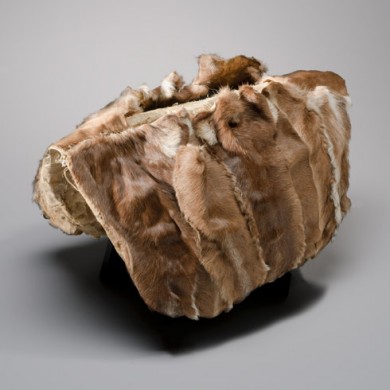Gwich'in Name
-
Teetł’it Gwich’in Name:
Łehthòh Play Audio -
Gwichya Gwich’in Name:
Łąįį ghàa’ Play Audio -
Vuntut Gwitchin Name:
Ch’idrèedhòh łaii ghàa Play Audio
 “Toward summer, maybe in the spring, the men and women got ready to make dog packs. A family with five dogs would make that many packs. And when they moved, all the dogs had big packs, and the men had big packs. The women also had packs filled up with stuff and kids. Everybody seemed to work, and kids even walked for miles and miles when they had to move through the bushes, and sometimes over hills and mountains. When they got to a main river, where they could fish, they would settle down, wherever they knew they could put dry fish up and get lots of food for the winter to come.”
— Sarah Peters, Teetł’it Gwich’in Elder, 1973
“Toward summer, maybe in the spring, the men and women got ready to make dog packs. A family with five dogs would make that many packs. And when they moved, all the dogs had big packs, and the men had big packs. The women also had packs filled up with stuff and kids. Everybody seemed to work, and kids even walked for miles and miles when they had to move through the bushes, and sometimes over hills and mountains. When they got to a main river, where they could fish, they would settle down, wherever they knew they could put dry fish up and get lots of food for the winter to come.”
— Sarah Peters, Teetł’it Gwich’in Elder, 1973
Catalogue Data
| Materials: | caribou-leg skin, sinew |
| Dimensions: | L. 73.5 cm; W. 52 cm; approx. L. pockets 36 cm |
| Collected by: | Douglas Leechman, Old Crow, Yukon, summer 1946 |
| Catalogue Number: | CMCC VI-I-29 |
Manufacture and Use
-
About the Artifact
“The use of dogs for packing is claimed as an aboriginal trait and, consequently, one preceding the regular use...
Read more -
About the Collector
Douglas Leechman (1891–1980) was an anthropologist at the National Museum of Canada (now the Canadian Museum of...
Read more -
Oral History
“I remember the days when I was growing up. Dogs were very important to people ... the people taught their...
Read more









